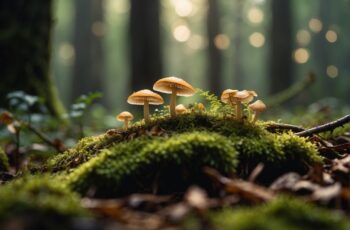Mushroom foraging in Point Reyes offers a unique opportunity to explore the natural beauty of California while engaging in a rewarding pursuit. As you wander through the diverse habitats of this coastal treasure, from the lush bishop pine forests to the rolling sand dunes, you’ll find that Point Reyes is a haven for a wide variety of mushrooms. This activity not only allows you to connect with nature but also to learn about the vital role that fungi play in the ecosystem.
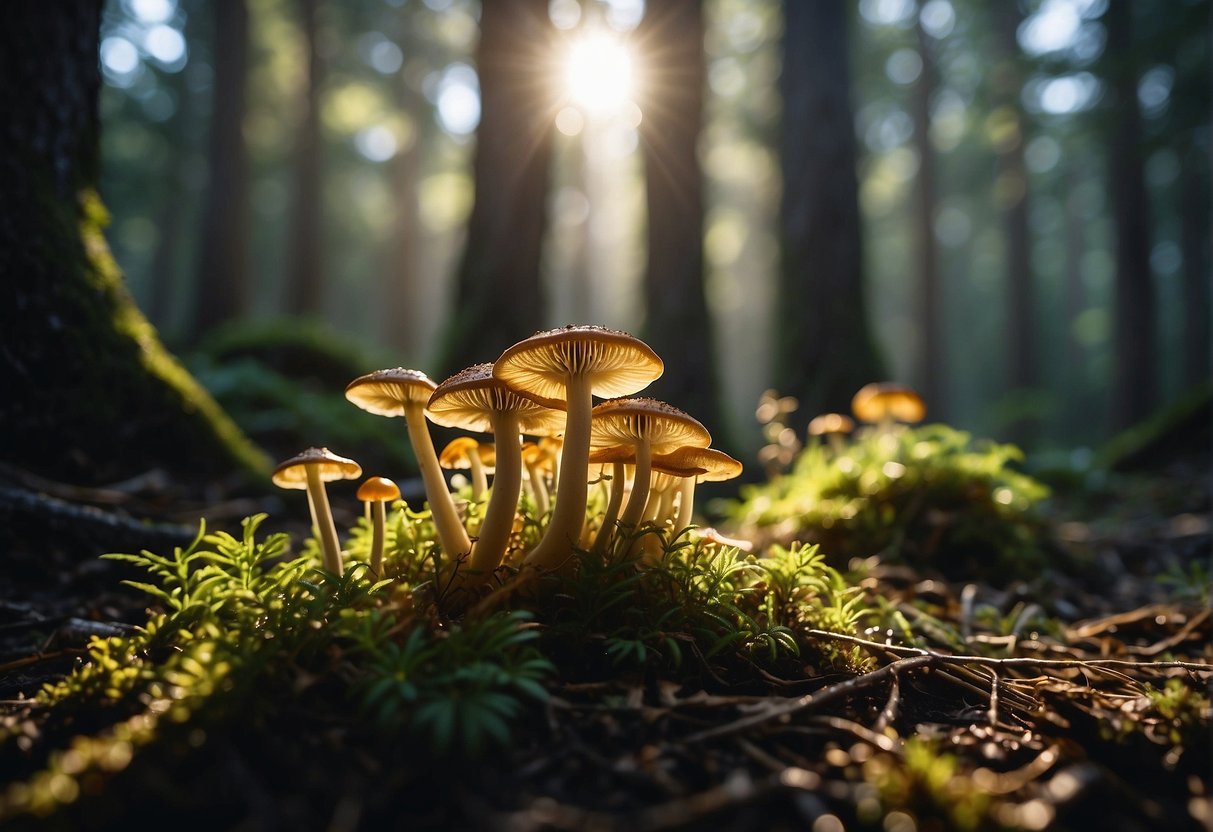
To embark on this foraging adventure, it’s essential to equip yourself with the right knowledge and tools. Understanding the guidelines for sustainable harvesting and recognizing the local mushroom species are crucial to ensure both your safety and the preservation of the Point Reyes National Seashore. Additionally, participating in educational workshops and community events can enhance your foraging experience, making it both enjoyable and informative.
Key Takeaways
- Explore Point Reyes’s diverse habitats for a variety of mushrooms.
- Learn sustainable harvesting and mushroom identification for safety.
- Enhance your experience with educational workshops and events.
Essentials of Mushroom Foraging at Point Reyes
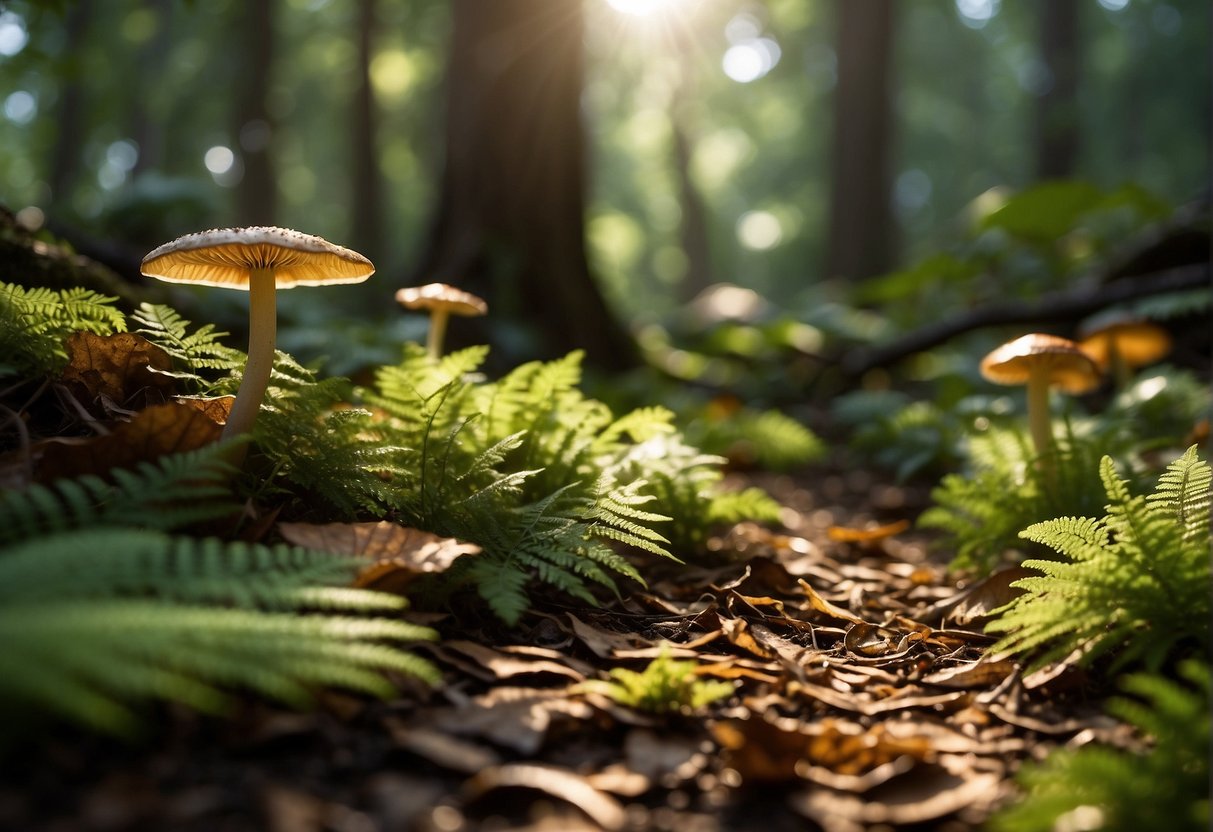
Mushroom foraging at Point Reyes National Seashore offers an enriching experience amidst diverse habitats. Awareness of the environment, safety practices, and mushroom identification are key to a rewarding forage.
Understanding the Ecosystem
Point Reyes is a haven with various ecosystems thriving in unison, making it a perfect spot for mushrooms such as chanterelles and candy caps. Recognizing the symbiotic relationships between fungi and their surroundings is crucial. For instance, pine forests and coastal woodlands support different species, which in turn contribute to the ecological health of the area.
Foraging Ethics and Safety
When foraging, always prioritize safety and conservation. Never consume wild mushrooms without absolute identification, as Point Reyes homes both edible and poisonous mushrooms. Adhere to the guidelines:
- Harvest Responsibly: Take only what you need, and avoid damaging the mycelium.
- Respect Wildlife: Remember, you’re sharing the space with many creatures.
- Stay Informed: Check the Point Reyes National Seashore regulations before your visit to ensure compliance with conservation policies.
Identifying Edible Species
Discovering edible mushrooms like morels, black trumpets, and chanterelles can be thrilling but demands expertise. Be equipped with a field guide for accurate identification. Here are some characteristics of popular varieties:
- Chanterelles: Vibrant yellow-orange, with a vase-like shape.
- Morels: Honeycomb appearance, usually found in spring.
- Black Trumpets: Dark, trumpet-shaped, and tend to grow in clusters.
- Candy Caps: Distinguished by their maple syrup scent when dried.
Before indulging in the flavors of foraged fungi, make sure they’re verified safe by an expert mycologist to avoid the risks of poisonous species.
Practical Foraging Tips and Techniques
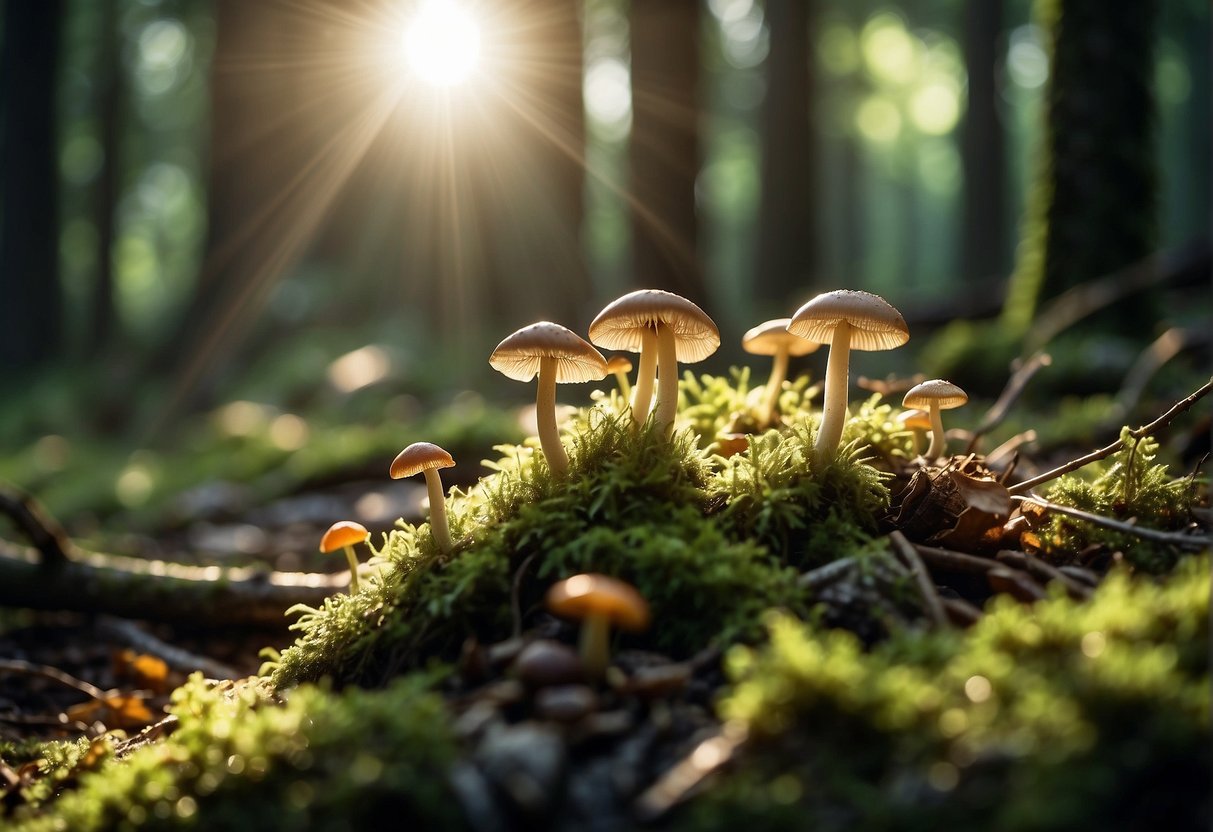
Embark on a mushroom foraging adventure in Point Reyes with these essential tips and techniques. Your preparedness and respect for the environment will pave the way for a fulfilling experience.
Best Times and Locations for Foraging
Point Reyes National Seashore thrives after a good rain, making the moist conditions ideal for mushroom growth. The mushroom season typically peaks from late fall to early spring. Popular foraging spots like Bear Valley present a diverse fungal landscape. Remember to check weather conditions before your hike, as trails can be slippery post-rain.
What to Bring on a Foraging Trip
Your foraging trip requires some essentials:
- Day Pack: Fill it with your field journal to take notes, a lunch bag for your snacks, ample water, and if possible, a guidebook to identify mushrooms.
- Foraging Tools: A basket allows your collected fungi to breathe, reducing spoilage. Keep a sturdy knife on hand for clean cuts.
- Hiking Gear: Waterproof hiking shoes are a must-have to navigate the damp trails comfortably. Always carry a water bottle to stay hydrated during your foray.
How to Harvest Mushrooms Sustainably
Sustainable harvesting ensures mushrooms continue to thrive:
- Cut don’t pull: Use your knife to slice the stem, which minimizes damage to the mycelium.
- Take what you need: Harvest only the mushrooms you plan to use, preserving others for wildlife and future foragers.
- Leave no trace: Keep the habitat undisturbed by sticking to established trails and leaving the site as you found it.
Through these practices, you contribute to the conservation of Point Reyes’ unique ecosystem while enjoying the bounties of nature responsibly.
Mushroom Identification and Local Species
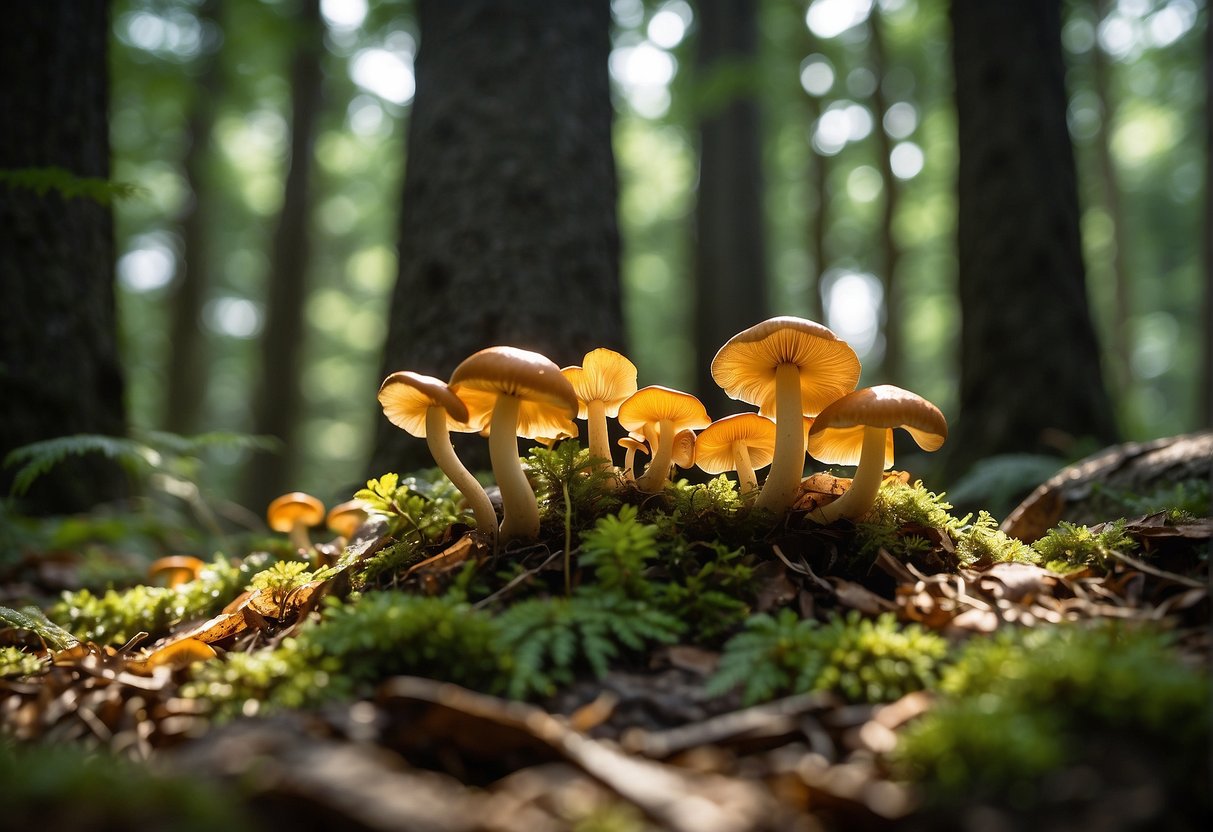
Embarking on a mushroom hunting expedition in Point Reyes necessitates knowledge of the mushrooms’ distinctive features and an understanding of the local species that populate the area.
Characteristic Features of Common Mushrooms
Stems and caps are your starting points; many mushrooms in California have these classic structures. The death cap mushroom (Amanita phalloides), for instance, showcases a pale cap and a notable skirt around its stem. Shaggy mane (Coprinus comatus) is easily identified by its tall, cylindrical white cap, which deliquesces into an inky substance during spore release. Turkey tail (Trametes versicolor) mushrooms flaunt multiple colors in concentric circles on their diminutive, fan-shaped caps. When identifying these fungal organisms, the structure of the cap, the presence of gills, the stem thickness, and any unique scent (like the maple syrup odor of candy caps (Lactarius rubidus)) are all crucial.
Point Reyes’ Unique Fungal Flora
Point Reyes is home to a rich mycological tapestry. Amid its forests, lush with California mushrooms, you may discover the prized porcini (Boletus edulis). These sought-after fungi feature stout stems and large, brown caps, lacking the typical gills but instead having a porous undersurface. Chicken of the woods (Laetiporus sulphureus) is another local favorite recognizable by its bright orange, shelf-like formations on trees and its meaty texture. The delicate hyphae of these fungi weave through the park’s terrain, decomposing organic matter and enriching the forest floor. Always confirm your finds with a knowledgeable guide; mushroom hunting can be thrilling, but also perilous due to toxic look-alikes.
Educational Opportunities and Community Events
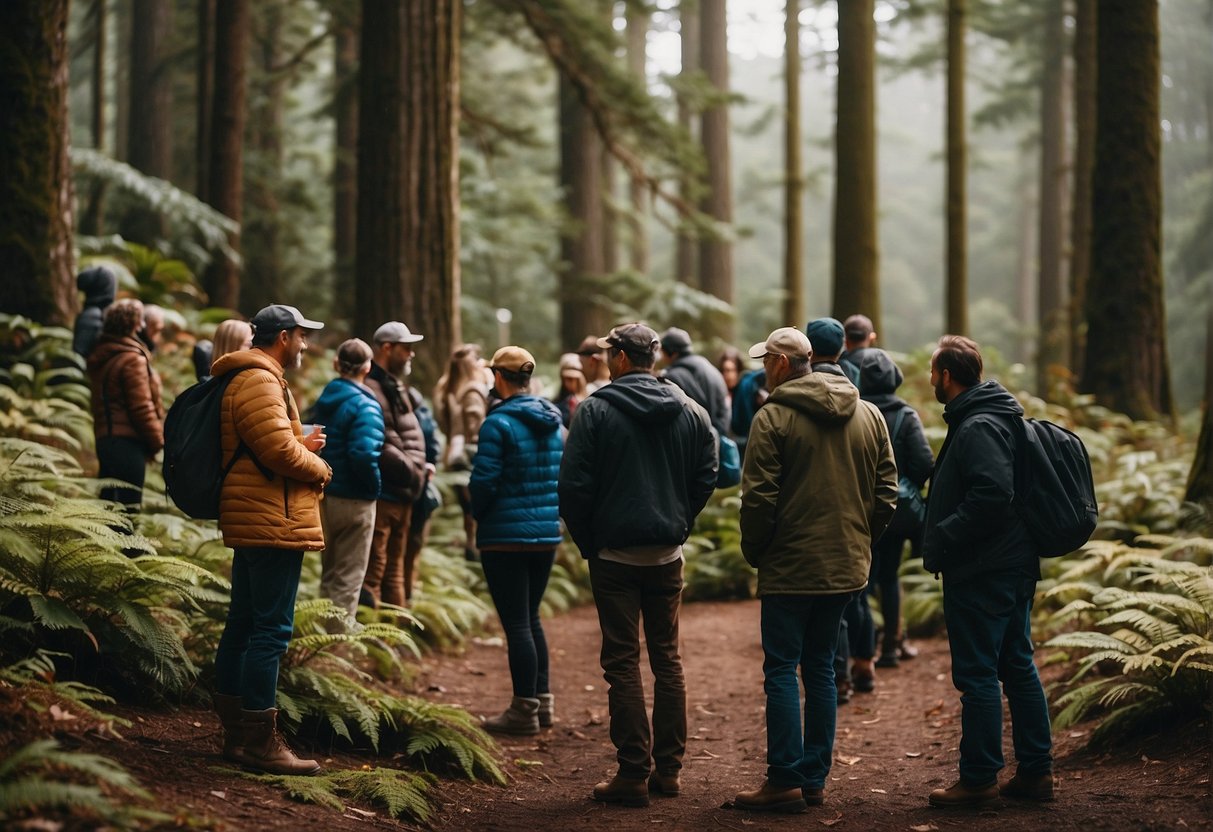
In Point Reyes, you have the opportunity to deepen your understanding of mycology through a range of hands-on workshops and engaging community events.
Workshops and Classes
Dream Farm Mushrooms offers a spectrum of educational workshops in Point Reyes. These hands-on classes designed for beginner to intermediate mushroom enthusiasts provide a thorough introduction to fungi. Beyond the basics of identification, you delve into a deeper conversation about mushrooms with expert instructors from the area. They can range from the study of morels and boletes to the application of mushrooms in wellness. Workshops here are not just educational; they serve as a bridge to connect with like-minded foragers and outdoor educators within the Bay Area Mycological Society. Remember to secure your spot as classes fill quickly— look for your Eventbrite confirmation email after registering.
Fungal Foray and Fair Participation
The annual Fungus Fair at Point Reyes, typically held in January, is a must-attend for any mushroom hunter. Join other mycology aficionados at the Bear Valley Visitor Center where you can experience wild mushrooms collected in the park. The fair offers many mushroom-related exhibits, and Mushroom Ambassadors are available to answer questions. Participation in this event is a great way to connect with both the University of California experts and Sonoma County‘s local foragers. If you are looking to expand your foraging community and learn about the local ecosystems, brace yourself for a fantastic day. The PRNSA Field Institute also offers outings for you to partake in a fungal foray, an exhilarating hunt for wild mushrooms, guided through the woods by local experts. This experience emphasizes environmental education and respect for the forest’s delicate ecosystems, all within the extraordinary setting of Point Reyes.


